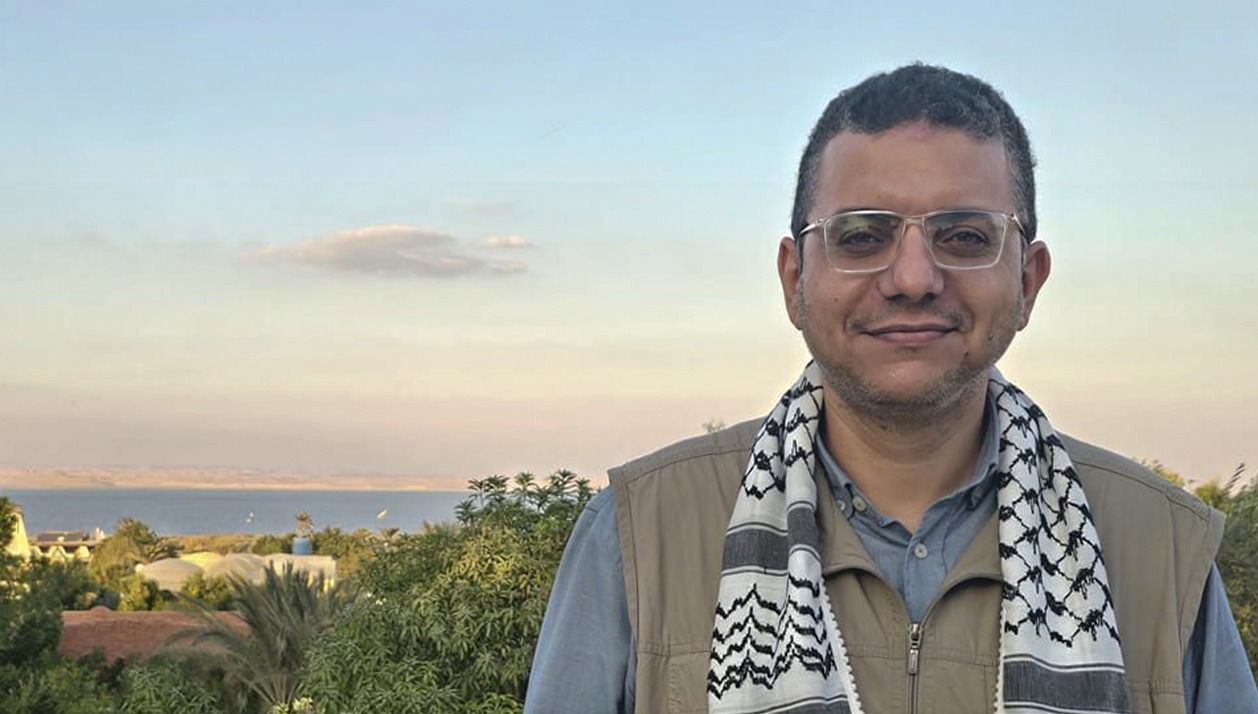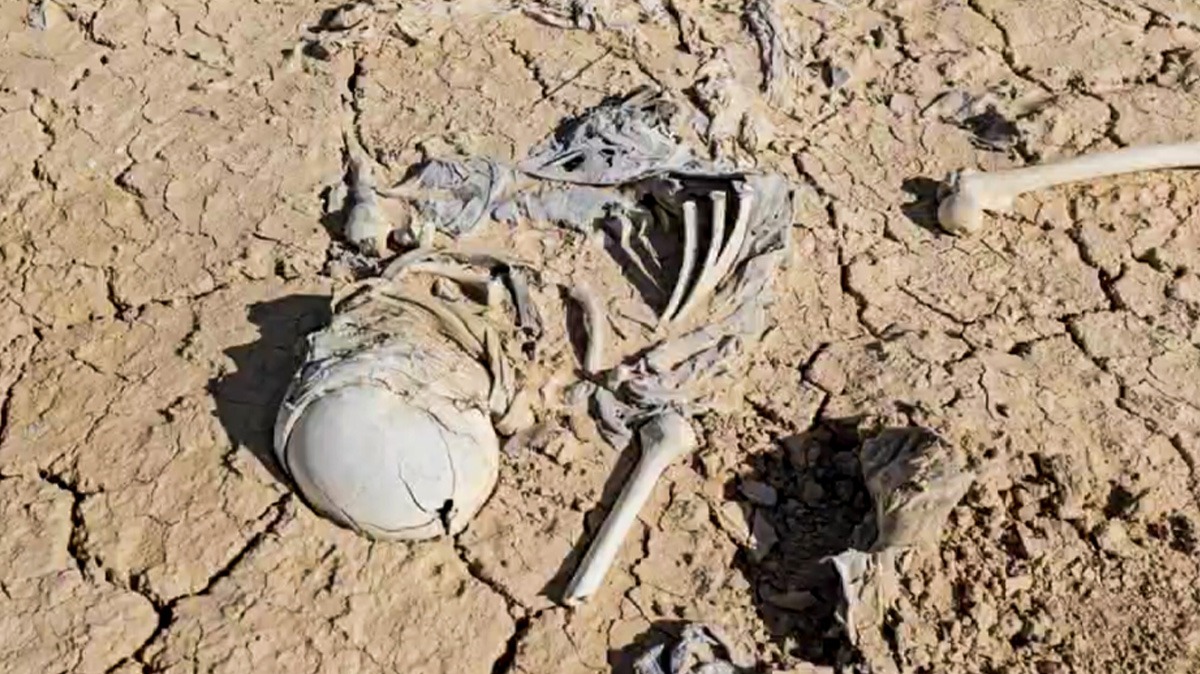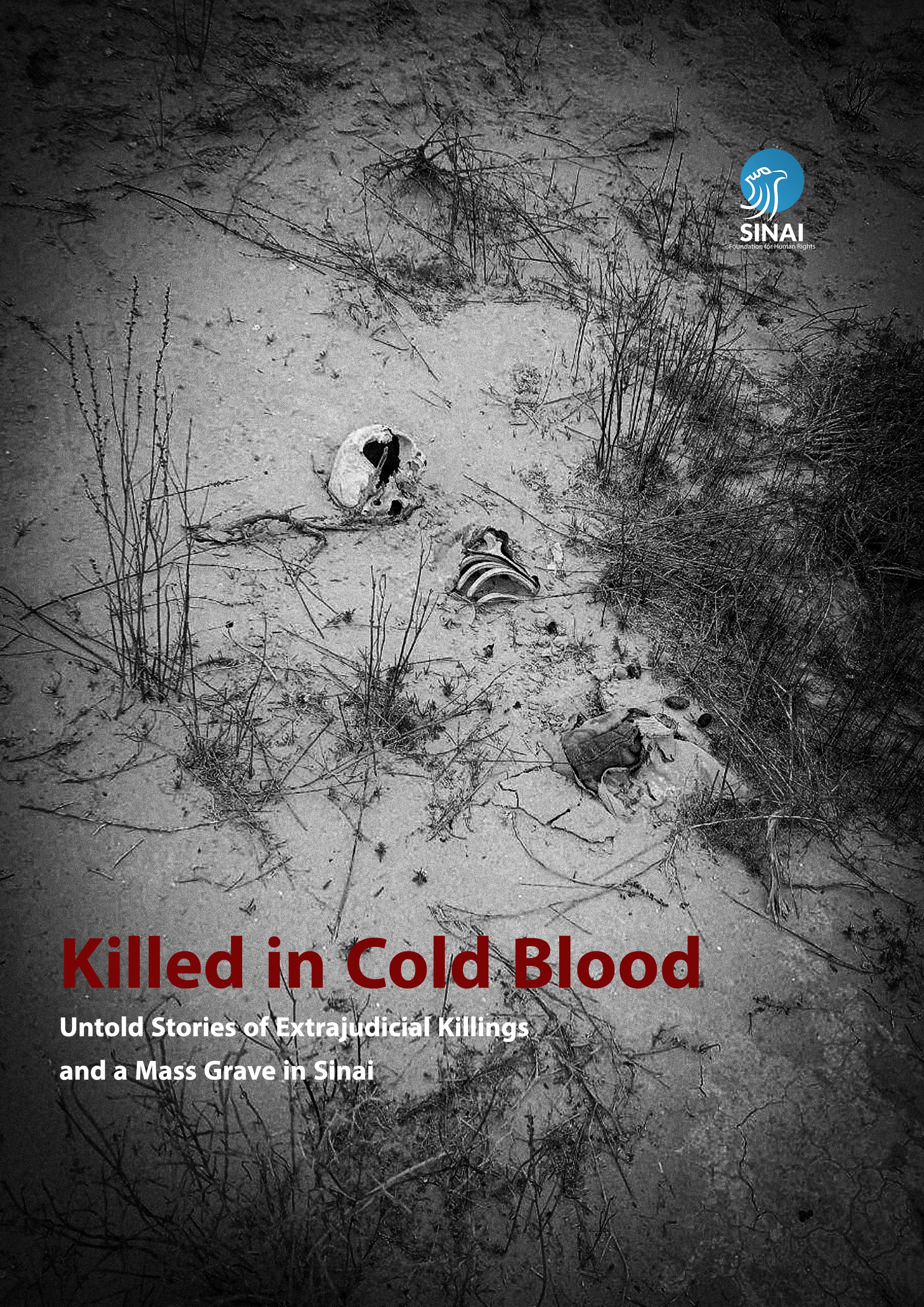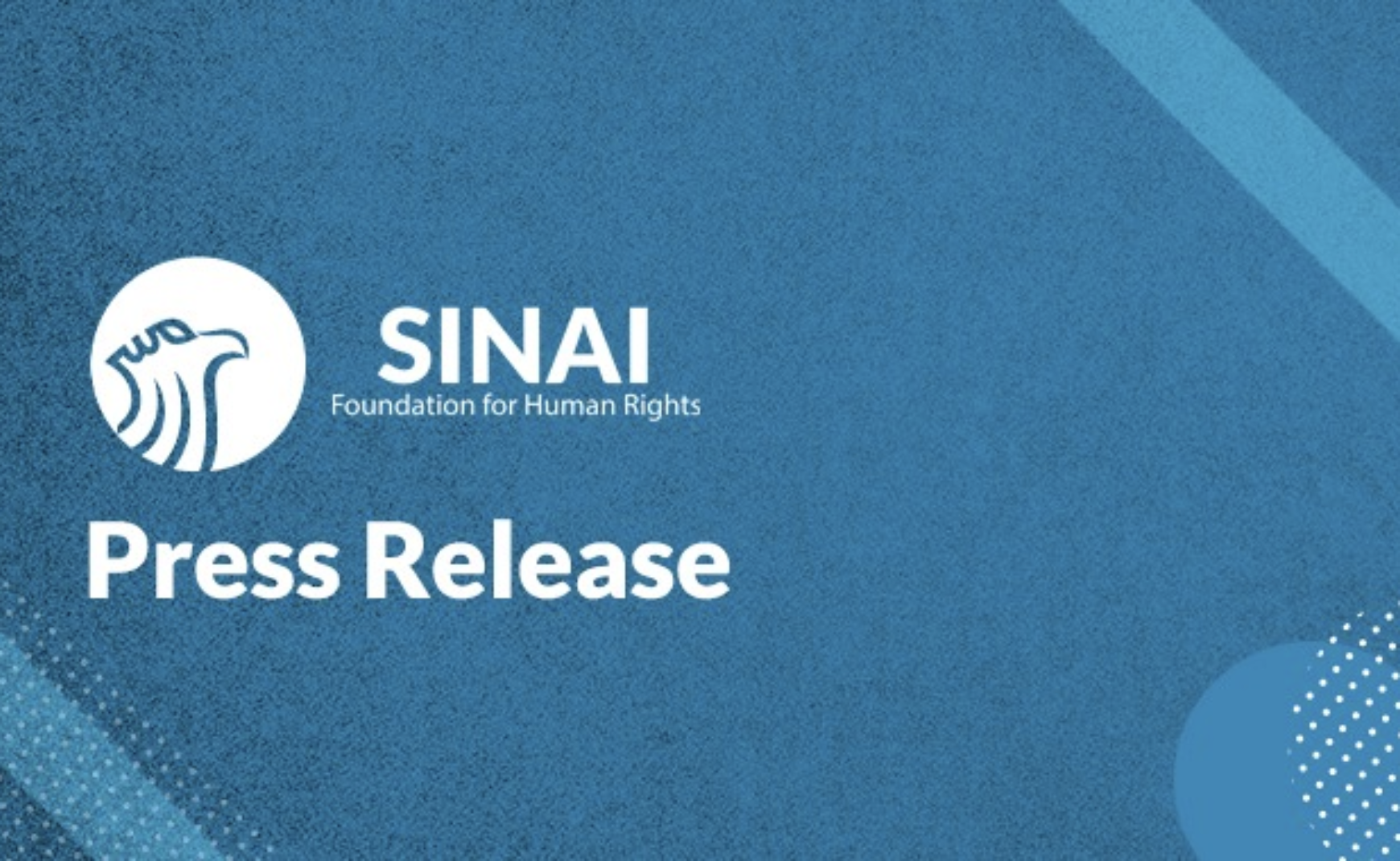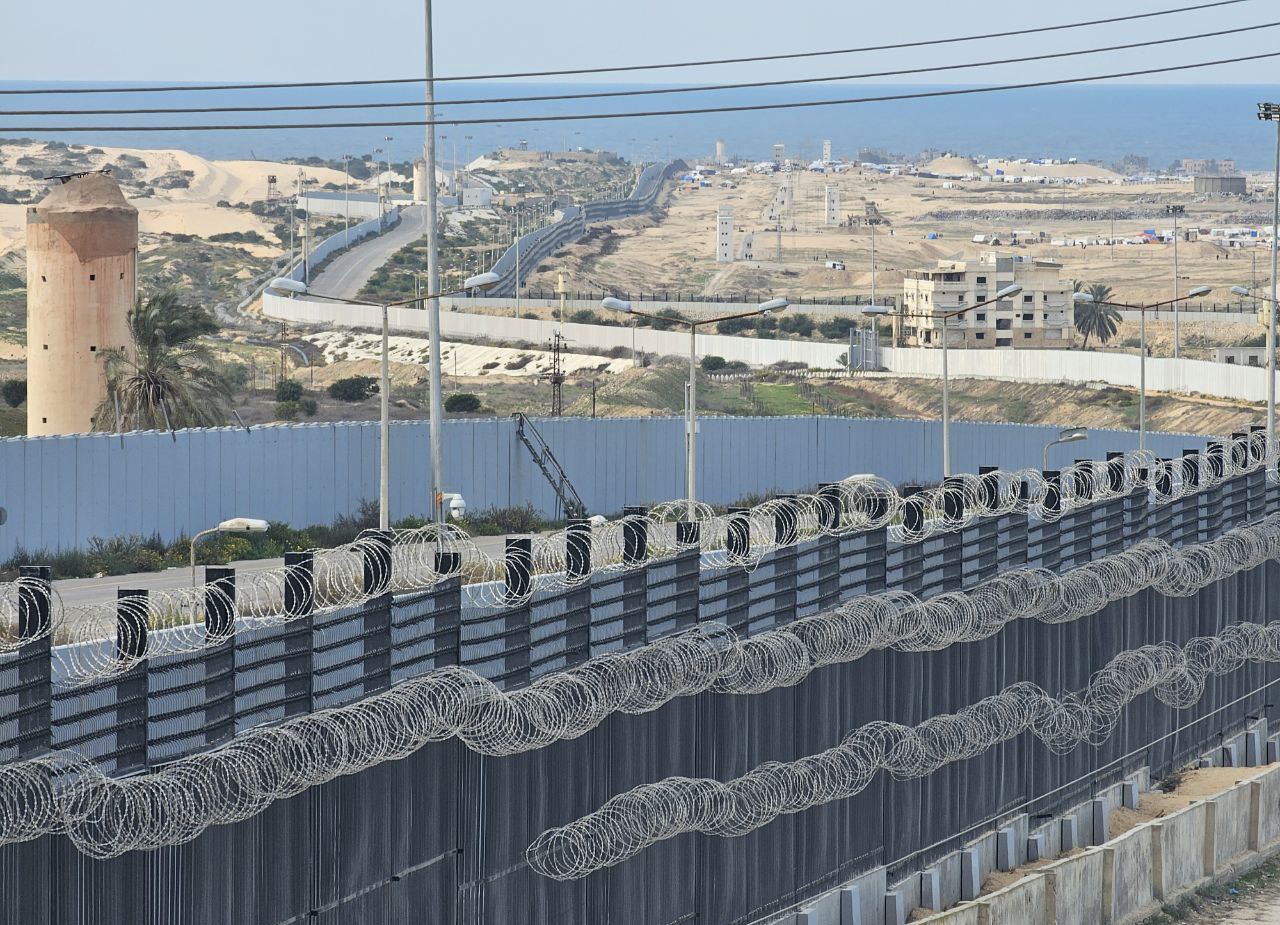
"The Philadelphi Axis: An Israeli Security Need or a Pretext"
Introduction
Recent political tensions between Egypt and Israel have intensified against the backdrop of the ongoing war in the Gaza Strip. A pivotal moment came with Israel’s announcement of an imminent military operation in Rafah, thrusting the issue of the Philadelphi Corridor into the forefront. This 14-kilometer border strip, established by the 1979 Camp David Accords between Egypt and Israel, historically served as a buffer zone to prevent cross-border smuggling between Egypt and the Gaza Strip
The 2005 Israeli disengagement from Gaza and the subsequent MAMA agreement shifted control of the corridor to Egypt, while the Rafah crossing was placed under the control of the Palestinian Authority, with an EU monitoring role and Israeli supervision. This arrangement persisted until Hamas’ takeover of Gaza in 2007. Despite decade long Egyptian measures to eradicate the tunnel system that emerged following Hamas’ early rule in Gaza and Egypt asserting its complete control over its section of the border, Israel still contends that the corridor remains a conduit for Hamas to smuggle its weapons through existing underground tunnels, a claim that has strained diplomatic relations with its neighbor. What initially unfolded in secrecy came to the forefront with Israel’s Prime Minister Benjamin Netanyahu announcing his plans to invade Rafah and adding in a recent interview alluding to Egypt that Israel has its own national interests.
Israeli officials had also expressed their concern about Egypt’s effectiveness and its ability to manage the Philadelphi Axis. Pointing out that gaps within the Egyptian security establishment allowed weapon smuggling to flow into Gaza. These claims have been a focal point for Israel in its discussions regarding its demands and plans to take control of the axis and invade the city of Rafah during the ongoing war that erupted on October 7, 2023.
On February 9, 2024, Israeli Prime Minister Benyamin Netanyahu issued orders for the preparation of a military action plan and another evacuation plan for the civilians in Rafah south of the strip. Concurrently with the escalating official Israeli statements about the invasion of Rafah, Reuters reported quoting Egyptian security sources that Egypt had sent around 40 tanks and armored personnel carriers to northeastern Sinai. Additionally, Egypt constructed a concrete border wall that stands six meters above the ground and is topped with barbed wire. The security sources also mentioned to Reuters that the Egyptian military had built several barriers and enhanced their surveillance at different border sites as part of a series of measures to strengthen the security along its borders with Gaza. These deployments occurred prior to the expansion of Israeli military operations around the city of Rafah, which is currently densely populated with displaced Palestinians seeking safety from the northern and central areas of the strip. As a result, Egyptian concerns have grown regarding the potential collective displacement of Palestinians from the territory.
In mid-February 2024, Sinai Foundation for Human Rights published a report on Egypt’s efforts to construct a secure buffer zone surrounded by walls, covering an area of 19 square kilometers in Egyptian Rafah, located in eastern Sinai. This preparation was in anticipation of a potential mass displacement if Israel were to invade southern Gaza. Additionally, the foundation monitored the frequency of Israeli airstrikes from February until March 21, 2024. These airstrikes targeted the eastern parts of Rafah, near the border in the southern Gaza Strip, primarily affecting vacant and agricultural lands close to the border fence. Furthermore, limited incursions into the eastern parts of Rafah were documented earlier this month. These activities included bulldozing work near the destroyed Yasser Arafat Airport east of the city, possibly indicating plans for future monitoring sites or gathering points for Israeli forces in the area ahead of an impending Israeli invasion of Rafah.
In recent days, several alternatives for an Israeli ground invasion of Rafah have been discussed within the U.S. administration, as reported by Axios. U.S. officials mentioned that one idea is to delay the military operation in the city and focus on stabilizing the humanitarian situation in northern Gaza. Another idea brought up in the discussions involved initially securing Egypt’s borders with Gaza ahead of entering Rafah, without specifying details on how this would be done. The report mentioned that this would be part of a joint plan between the United States, Egypt, and Israel to destroy the alleged tunnels beneath the borders and establish infrastructure aimed at preventing weapons smuggling into Gaza.
Despite U.S. statements about efforts to prevent an invasion of Rafah, Israeli Prime Minister Benjamin Netanyahu reaffirmed on March 22, 2024, that they are heading to Rafah with or without U.S. support, emphasizing that Israel remains determined to send its forces to the city in southern Gaza, where over a million Palestinians are crowded, even if it requires doing so without U.S. backing.
This paper aims to analyze the accuracy of Israeli claims amid persistent and repeated statements about its desire to regain control of the axis. In this paper, we delve into the validity of Israel’s allegations regarding the smuggling routes beneath the border axis. This analysis relies on exclusive visual materials, documents, and interviews sourced from Sinai Foundation for Human Rights, enriched by interviews with Palestinian Security Officials.
Challenging “The smuggling tunnel network” theory
Between 2007 and 2013, an estimated 1,500 tunnels were operational beneath the Gaza-Egypt border. These tunnels were primarily used to circumvent the blockade’s impact on Gaza, as noted in a 2015 (UNCTAD) report. In response to recent Israeli accusations against Egypt of security breaches along the Philadelphi corridor, the State Information Service announced that it had eliminated these 1,500 tunnels from 2013 to 2020. Additionally, Egypt had already in the previous years established a buffer zone extending five kilometers deep within Egyptian Rafah and spanning 14 kilometers along the border with Gaza. The media office also emphasized in its statement that the border fence with Gaza had also been reinforced by adding a six-meter-high concrete wall above ground and another six meters below it. This effectively created three barriers between Sinai and Palestinian Rafah, making it impossible for any smuggling to occur either above or below ground.
On February 6, 2016, Israeli Minister of Energy Yuval Steinitz acknowledged Egypt’s efforts in flooding the tunnels. He emphasized that security cooperation was at its peak and that this action was partially in response to Israel’s request.
However, there are a lot of gray zones about the tunnel network in Gaza, especially at the Philadelphi corridor. A Palestinian security official, previously stationed at the Philadelphi corridor, told Sinai FHR, "That's the norm when it comes to borders – they inherently are gray zones."
The Israeli media’s narrative on the existence of active tunnel networks has often been speculative, hinged on information relayed by statements by anonymous Israeli military officials rather than tangible proof. This narrative is echoed by some American security analysts with connections to the Israeli military, who have discussed this narrative in the international press without providing any concrete evidence about their existence. Despite this, such claims have found their way into various global news outlets.
In an attempt to critically evaluate these claims, Sinai Foundation for Human Rights obtained exclusive documentation from both Egypt and Gaza. These materials include visual materials, documents, and interviews. For the first time, we provide insight into the recent security conditions and dynamics along the Philadelphi Corridor.
Over the past decade, Egyptian authorities have made unprecedented efforts to dismantle the tunnel network along its border with Gaza. These efforts began in late 2013 when President Abdel Fattah el-Sisi assumed power in Egypt. In this context, President Sisi issued Decree No. 444 of 2014, designating 5 kilometers of land within the city of Rafah as a «prohibited area» along the Gaza border. The rationale behind this move was to address the threat posed by smuggling tunnels. Consequently, thousands of homes were demolished in populated areas to create a buffer zone along the Gaza border, resulting in the displacement of approximately 100,000 local residents in Sinai. This policy extended over an area estimated at 79 square kilometers.
According to exclusive sources within the Palestinian police in Rafah, as reported by Middle East Eye, Egypt destroyed approximately 95% of the tunnels connecting Gaza to Egypt by 2015.
The visual materials presented in this paper regarding the establishment of the buffer zone in Sinai reveal the extent of strict measures taken by the Egyptian state. Over the years, the Egyptian Military Engineering Corps carried out intensive operations at a considerable legal and economic cost. These operations involved the destruction of farms, demolition of homes, and the transformation of Egyptian Rafah into a scorched land all aimed at eradicating the existing tunnels along the border. The policy of forced displacement in Egyptian Rafah practically eliminated one side of the smuggling system, as smugglers had previously taken advantage of the presence of residents, houses and farms to conceal their activities. Hence, with the creation of the buffer zone, the entire area became fully exposed with the dense presence of the Egyptian military. Any movement on the ground became a legitimate target for the Egyptian Military Forces.
The destruction of the Egyptian city of Rafah led to a complete paralysis of smuggling activities across the border with Gaza. Most of the previously destroyed tunnels by the Egyptian army followed a specific engineering model: a connected system from a house in Sinai to a house in the Gaza Strip or a covered agricultural shed. The tunnel entrances were discreetly placed inside homes and any tunnel operating outside this model would be instantly detected, making it a suicidal endeavor. This is corroborated by accounts from previous interviews conducted by the Sinai Foundation with several smugglers over the past years
According to one of the smugglers we met, he mentioned that Egyptian Rafah has become a land devoid of houses and farms, making it impossible to store food truckloads, fuel, or weapons in the open. He added that engaging in smuggling activities with Gaza is currently a suicide mission due to the dense presence of the Egyptian military. He mentioned that the less risky smuggling activities occur across the borders with Israel and are limited to locally cultivated drugs. «The Egyptian Rafah area is currently entirely uninhabited, and civilians are prohibited from entering it without security permits» he said, adding «In the past, we used to obtain goods entering Gaza from the Egyptian side west of the Suez Canal. However, currently, bringing any quantities of materials into Sinai requires a commercial registry, security approvals, and thorough inspections at the Suez Canal.»
In an interview with two other smugglers, they revealed receiving phone calls from Israeli intelligence officers between 2015 and 2017, warning them against smuggling specific materials into Gaza. These materials included wires, electrical circuits, and welding tools. The interviews we conducted also confirmed that smugglers who continued smuggling these materials into Gaza, were targeted and bombed within Sinai by Israeli drones.
Egyptian efforts to combat smuggling tunnels took a significant turn in 2015. During that year, the Egyptian military transported Mediterranean Sea water to the border with Rafah to fill a new canal that had been dug along the border. This action led to the flooding and destruction of most vital tunnels connecting Egypt to the besieged Gaza Strip.
The materials presented in this document provide a detailed account of the canal-building process and its resulting impact on the tunnel network from within the tunnels themselves. Additionally, the Egyptian army reinforced the security measures along the Philadelphi Corridor by filling the tunnels with concrete, hindering attempts to repair and reactivate the tunnels.
It’s a matter worthy of contemplation. Egypt took a bold step by enhancing security along the border axis and combating the tunnels connected to Gaza. However, these efforts came at an extremely high cost—destroying an entire city and displacing tens of thousands of Egyptians to achieve this goal. The price is still paid by the residents of Egyptian Rafah to this day.
This paper also reveals, for the first time, the relentless efforts of the Egyptian military in a race against time to identify tunnel locations and destroy them along the Philadelphi Corridor, with the assistance of cooperative residents working with the Egyptian security forces. The military began bulldozing deep into the tunnels parallel to the border area and detonating them by planting explosives inside. Exclusive visual materials showcase these engineering efforts, including the moment of detonating a commercial tunnel in the Abu Helou, Al-Masoura Village.
In a recent interview, an Egyptian soldier who served on the border between Egypt and Gaza shared his daily routine. All soldiers stationed along the Gaza border had received orders to fire an entire magazine of bullets on a daily basis as warning shots in the open areas to deter smugglers. Additionally, soldiers were instructed to shoot at any moving object, although the soldier reported not encountering any significant incidents during his years of service.
In 2017, an agreement between Hamas and Egypt in Cairo led Hamas to implement extensive measures to create a buffer zone on the Palestinian side of the border. These measures included establishing a buffer zone approximately 0.5 kilometers deep into Rafah, in exchange for facilitating the opening of the Rafah crossing for civilian travel. Footage obtained from Palestinian sources shows how Hamas-run security forces deployed surveillance cameras and constructed a buffer zone along the Sinai border. Currently, hundreds of thousands of displaced Palestinians seek refuge within this zone during the war on Gaza
In november 2021, Israel’s military radio announced the formation of a joint military committee between the Israeli military and the Egyptian one. The convening of this committee led to a review of the existing agreement regarding restrictions on Egyptian presence along the corridor. Essentially, the modification strengthened Egyptian security presence and control along the Corridor by enabling, what it called, more effective “counterterrorism” activities as reported.
Furthermore, the multinational forces and observers in Sinai played a crucial role in ensuring Egypt’s compliance with its duties regarding tunnel-thwarting operations and periodically enhancing its security measures along the corridor. Regular surveillance patrols, including helicopter flights, were conducted over the Philadelphi Corridor and the Egyptian city of Rafah to monitor Egypt’s operational activities along the axis. Sinai Foundation for Human Rights shares a documentation of such monitoring and observation activities. Notably, the multinational forces have not publicly recorded any violations or negligence on the Egyptian side in fulfilling its role in border control and security over the past decade.
In recent years, smuggling weapons into the Gaza Strip has become nearly impossible. A former senior Palestinian security official, who requested anonymity, revealed to Sinai Foundation for Human Rights that they received briefings in the past from Egypt whenever incidents like these occur. He commented, “If it is possible to smuggle weapons into Gaza today, it is likely to be above ground.” He further added, “This scenario also seems unlikely, considering the extensive efforts Egypt has made over the past decade to secure its borders along Gaza”.
Moreover, Egypt’s efforts to thwart weapon smuggling into Gaza extend beyond its land-based operations. Reports from September 2020 indicated that Egyptian authorities had retrieved the bodies of two Palestinian fishermen killed by Egyptian gunfire in the sea near the border with Gaza on September 26, 2020. Former Palestinian Prime Minister Mohammed Shtayyeh expressed back then his sorrow on his social media account, while Hamas strongly condemned the Egyptian military’s use of live ammunition against fishermen at sea, urging Egyptian authorities to open an investigation into “this painful incident and ensure it is not repeated.” Simultaneously, Israel has also intensified its efforts to combat maritime smuggling by bolstering its naval presence near Gaza. Several cases of arresting fishermen or seizing their boats have been recorded in these areas.
Sinai Foundation obtained visual materials revealing maritime activities of the Egyptian military in the heart of the coast of Gaza. These materials include pursuits of fishing boats and targeting fishermen..
It’s interesting that the Egyptian campaign against the smuggling network was not a one-sided effort. A few years ago, ISIS made diligent attempts to gather information about Hamas’ operations and its smuggling techniques in an attempt to undermine their activities. An exclusive security document we obtained from sources within the Government in Gaza reveals details of an interrogation conducted by officers from the Internal Security Agency, affiliated with the Gaza Ministry of Interior directed at Hamas’ Military Intelligence on October 23, 2017. The subject of the interrogation revolved around three Palestinian workers from the Shejaiya neighborhood in eastern Gaza City who were abducted by ISIS from a tunnel connecting Gaza to the Sinai Peninsula. The document sheds light on how ISIS took measures to prevent weapons from being smuggled to Hamas through the remaining tunnels in 2017, which were later destroyed,
In some recorded instances, ISIS in Sinai executed one of its militants on the grounds of his involvement in Hamas’ smuggling efforts. Additionally, the Sinai branch of ISIS punished Hamas by closing commercial tunnels in their areas of influence in Sinai. These actions by ISIS in Sinai were a reaction to Hamas’ growing proximity to the Egyptian Government in late 2017. In a similar context, the Israeli security website “Defense” reported that ISIS in Sinai decided to confront Hamas in Gaza by targeting arms dealers and disrupting Gaza’s weapon supply routes. The report titled “ISIS Closes the Arms Trade Triangle to Hamas'' highlighted that the Israeli Navy’s control over the sea and beaches left only one remaining route for smuggling in Sinai. The tunnels, which were considered the easiest and safest method employed by Hamas for arms smuggling through Sinai, were affected by the intensified efforts of the Egyptian military against them. Consequently, Hamas found itself increasingly reliant on weapon dealers, a situation that ISIS sought to counteract.
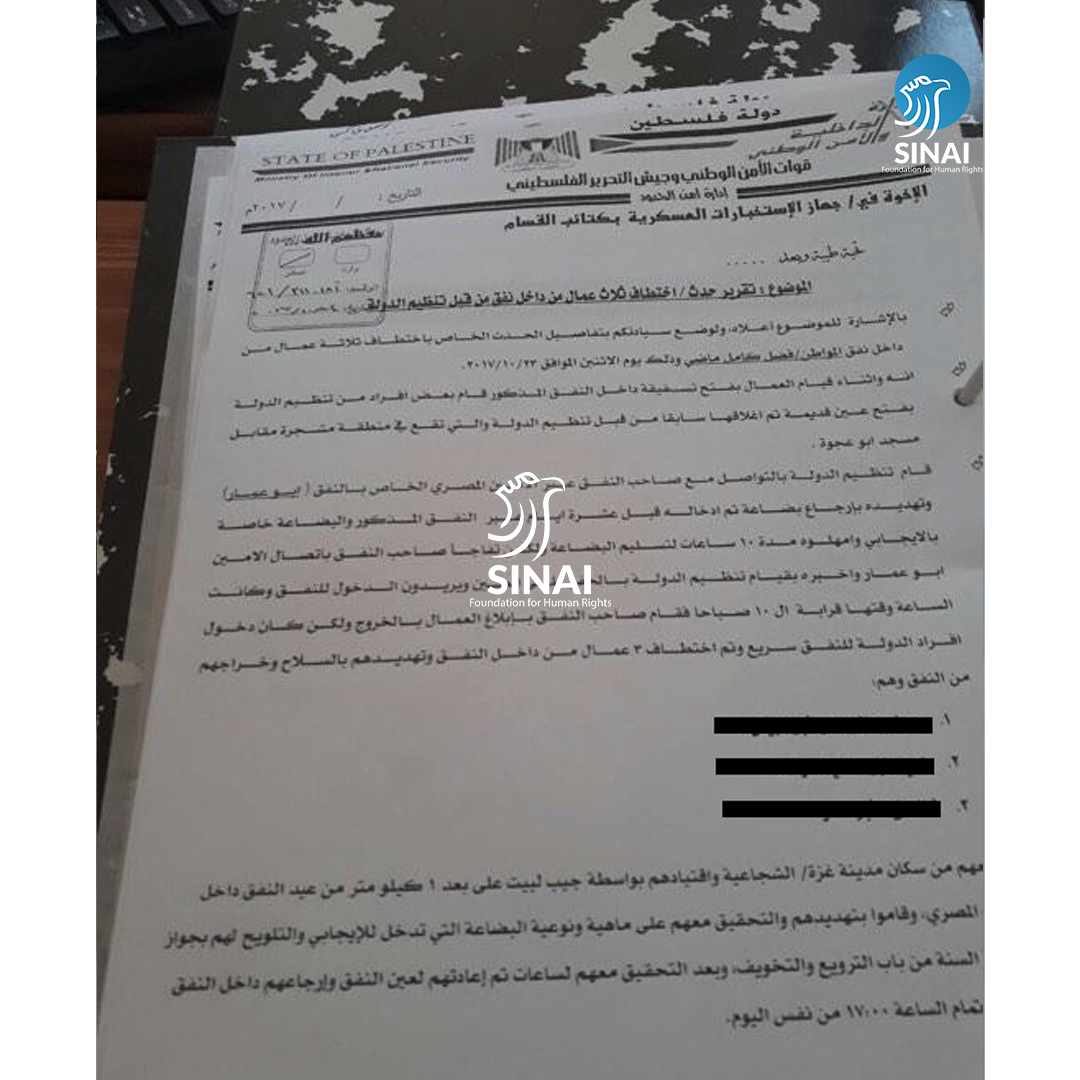
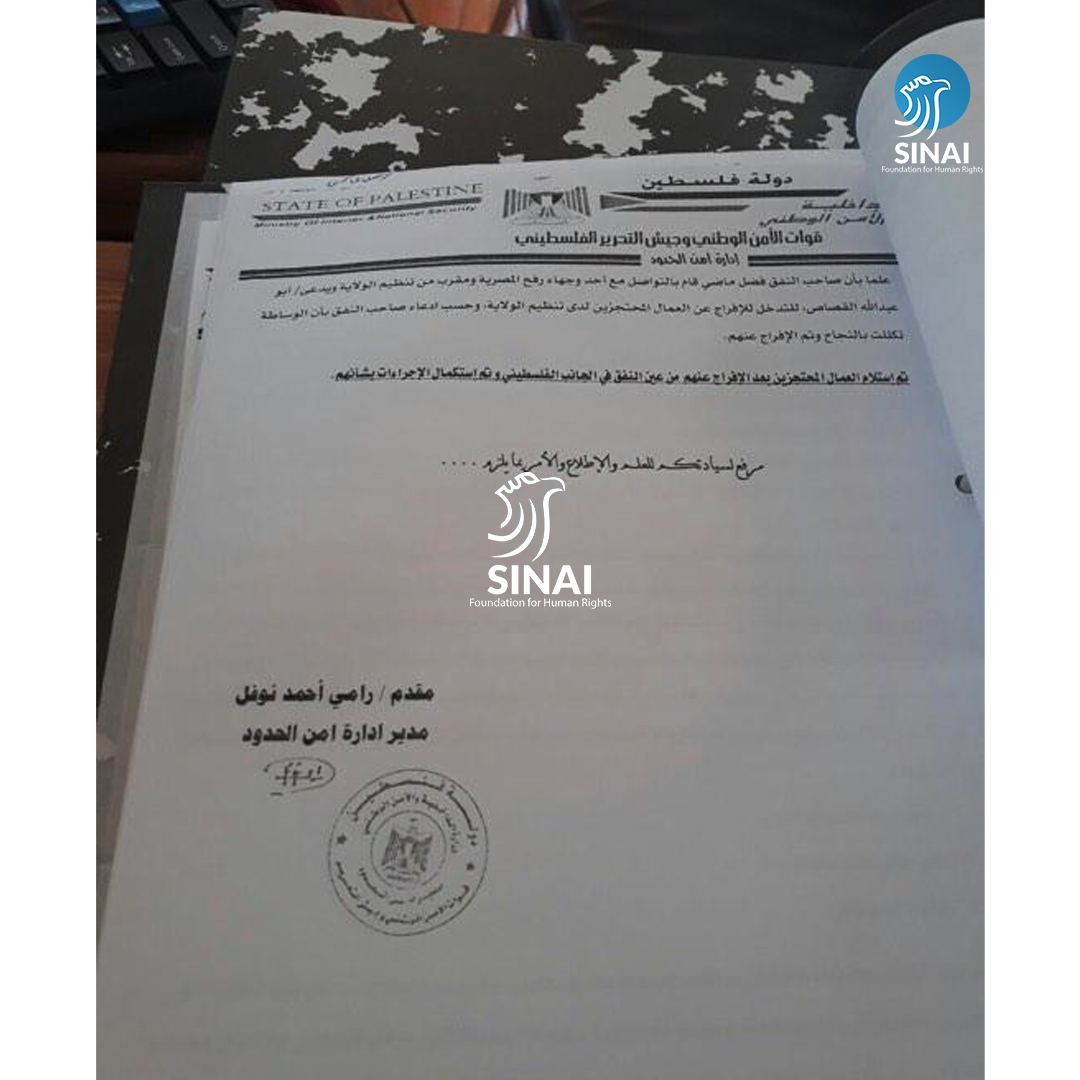

Indications on minimum smuggling
During the war on Gaza, Palestinian military factions, primarily Hamas, sparingly used non-local weaponry such as Kornet and SAM-7, far less prominently than in previous escalations. Their main reliance was on locally manufactured arms such as the Yasin 105 shells and homemade explosive bombs, An investigation by Al-Jazeera’s "Tip of Iceberg" highlighted Hamas’s resource challenges, revealing their use of water pipes constructed beneath the Israeli settlements in Gaza that were dismantled in 2005. Additionally, reports from The New York Times indicated that most of Hamas’ weapons used in the post-October 2023 war were produced by recycling the bombs dropped by Israel during previous escalation rounds.
In line with the Egyptian narrative of dismantling the tunnel network used for weapons smuggling into Gaza, a report from the Lebanese newspaper Al-Akbar, citing Egyptian sources, revealed that Cairo requested information from Israeli officials during the war regarding the tunnels they allege connecting the Palestinian side of the Philadelphi Route to the Egyptian side. Israel’s message to Egypt emphasized the need to tighten control over the sector, prevent anyone from leaving without coordination, and expressed concerns about the potential smuggling of Israeli prisoners through these tunnels.
This raises the question: If the tunnels indeed exist, why weren’t the Egyptians informed of their presence so that they could be eradicated?
So why taking over Philadelphi corridor?
In our interview with Major General Adnan Dmeiri, a former security official who previously served as the spokesperson for the Palestinian Authority’s security forces and is now an advisory member for the Fatah movement, he shares with SFHR his perspective on Israel’s determination and desire to control the Philadelphi Axis. This perspective is divided into two main aspects:
comprehensive control:
Israel’s desire for comprehensive control over the lives of Palestinians stems from what he describes as a ‘security obsession.’ This obsession extends beyond Israel’s desire to control what is rumored to exist below the ground, but also what lies above it. This comprehensive control includes regulating the movement of individuals entering and exiting the Gaza Strip, similar to the situation before Israel’s withdrawal from Gaza in 2005. Major General Dmeiri also suggests that there may be a political strategy behind this control, including influencing the future governing system in the Gaza Strip. Other related reasons include intelligence gathering through interrogating Gaza residents entering and leaving the area, akin to practices observed in the West Bank.
Depriving Hamas of its primary funding and governmental capacities:
The second objective, as described by Major General al-Dhmeiri, is Israel’s vision of depriving Hamas of its primary funding and governmental capacities. This involves halting tax collection by Hamas at the Rafah and Kerem Abu Salem crossings in Rafah. Israel’s control over these crossings would prevent Hamas from continuing to govern in any scenario after the ongoing war, including the ability to pay salaries to its employees. In other words, the absence of revenue would hinder the existence of a governmental system controlled by Hamas.
Alternative Explanations Behind Israel’s Desire to Control the Philadelphi Axis
First: Forcible Expulsion of Palestinians Outside the Gaza Strip:
Israel’s plan to take over the Egypt-Gaza border may compel it to forcibly absorb hundreds of thousands of displaced Gaza residents along its border fence. This poses, as Egypt claims, a strategic challenge and a security threat. The more comfortable scenario for Israel involves deporting one million Palestinians from Gaza outside the Strip before implementing the attack plan. However, there is an alternative plan, pushed by the U.S. administration, suggesting directing Gazans northward to Khan Yunis or Gaza City. This alternative scenario is less favorable for Israel because it would place them in a legally and ethically complex position. Effective Israeli control over all Gaza-borders would mean a direct military occupation of a famine-stricken and displaced population, with Israel assuming responsibilities for food and education in the area.
Israeli Officials’ Statements indicate such Intentions of forcible displacement, Daniella Weiss, a prominent figure in the Israeli settlement movement, stated on January 28th: “Gaza, Israel’s southern gateway, will open, and the people of Gaza will be scattered worldwide.” Her words and vision resonate strongly within Israel’s decision-makers, especially among right-wing government members. Additionally, Avigdor Lieberman, a senior Israeli official and former defense minister, explicitly referred to forced displacement, saying, “We will demolish the Philadelphi Axis, and Gaza’s population will move to Sinai. We won’t prevent their entry into Sinai, and Sisi and Egypt must bear the consequences!” These statements are part of several Israeli officials’ declarations outlining a plan to dismantle the Philadelphi Axis and urging Egypt, particularly President Sisi, to face the repercussions of their actions.
Second: The new model for expelling Palestinians outside: ‘voluntary immigration’
The presence of Hamas on the Palestinian borders over the past 17 years has provided the Egyptian state with pretexts to impose restrictions on travel movement of Palestnians through the Rafah crossing and its border management with Gaza. According to Egyptian claims, there is no internationally recognized authority governing these borders. Now, Israel aims to eliminate Hamas, and consequently, maintaining the old status quo is not their goal in the post-war phase.
Similarly, the return of the Palestinian Authority after the war would allow Palestinians to establish an internationally recognized, unified political system in both Gaza and the West Bank. A scenario that raises concerns for Israel and is met with outright rejection. Furthermore, Israel perceives the future reality on the borders as a direct tool that could enable either Hamas or the Palestinian Authority to govern the strip. In light of these complexities, Israel itself assuming control of the corridor emerges as a strategic approach aligned with its primary vision: facilitating the voluntary immigration plan for Gaza’s residents. The central question persists: How can this vision be practically realized?
By managing the Philadelphi Axis, Israel would aim to exert influence on Egypt, compelling it to open its side of the borders for the emigration of Gazans. A BBC report from January 2024 based on satellite image analysis mentioned that 50-61% of buildings in Gaza have been damaged or destroyed and according to a recent UNCTAD report Gaza’s economy would take decades to reverse.The Israeli strategy may involve encouraging Palestinians to voluntarily leave the Strip and coordinating with foreign countries to host them, given the huge destruction in Gaza. The Israeli approach seems feasible. Israel can then present this scenario to the international community, asserting that the Gazan population desires departure, and that Israel is not forcibly relocating them.
Third: Israel’s use of the Philadelphi Corridor as a bargaining chip:
Israel considers its control over the Philadelphi Corridor as leverage against any Palestinian party, whether it’s Hamas or the Palestinian Authority, in any future scenarios. For the Palestinian Authority, Israel may seek to reactivate the MAMA agreement—an arrangement governing the management of Palestinian Authority crossings, in exchange for significant security and political concessions. Israel could demand modifications to Palestinian educational curriculums, cessation of PA’s prisoner salaries, or withdrawal of the Palestinian legal complaints in international criminal courts against Israel. While sources have suggested that Egypt might allow operations within the Philadelphi Corridor in return for the Palestinian Authority’s role in shaping Gaza’s future, this claim was refuted by the Egyptian Ministry of Foreign Affairs. Notably, for Hamas, Israel controlling the corridor would bolster Israel’s position during the prisoner exchange negotiations.
Conclusion and Future Prospects:
Israel’s rationale for seizing control of the corridor to prevent tunnel smuggling seems unconvincing, given Egypt’s substantial efforts to thwart such activities, as discussed in this article and given Israel’s ability to explore alternative methods for its alleged security needs. Statements by Israeli right-wing leaders regarding their intention to build settlements in Gaza, coupled with the policy paper prepared by the Israeli Intelligence Ministry last October advocating for the displacement of Gaza’s population have shed clearer light on Israel’s intentions. Gaining control of the Philadelphi corridor would only further facilitate this strategic move, but it’s not the sole motivation. Israel positions it as a bargaining chip against the Palestinian people, preemptively challenging any party Hamas, the Palestinian Authority, or even Egypt in any future scenarios. Moreover, Israel’s take over could potentially open the door to the involuntary or voluntary displacement of Gaza’s inhabitants.
The article concludes by raising the following question: What will Israel truly achieve through this sensitive military invasion, which could result in the displacement of hundreds of thousands of Gaza residents along the corridor and threaten Israel’s long standing relations with Egypt, as Egypt has declared that such a move would significantly jeopardize their relationship. The answer remains to be seen.
This paper is authored by
- Younis Tirawi, a Palestinian journalist specializing in security and political affairs. He publishes on “X” formerly twitter, and has previously written for several local and foreign news agencies.
- Ahmed Salem, an Egyptian academic and the Executive Director of the Sinai Foundation for Human Rights.
- Additionally, the monitoring and documentation teams at the Sinai Foundation contributed by obtaining documents, visual materials, and conducting interviews referenced in this paper.
Tags
Related Postes
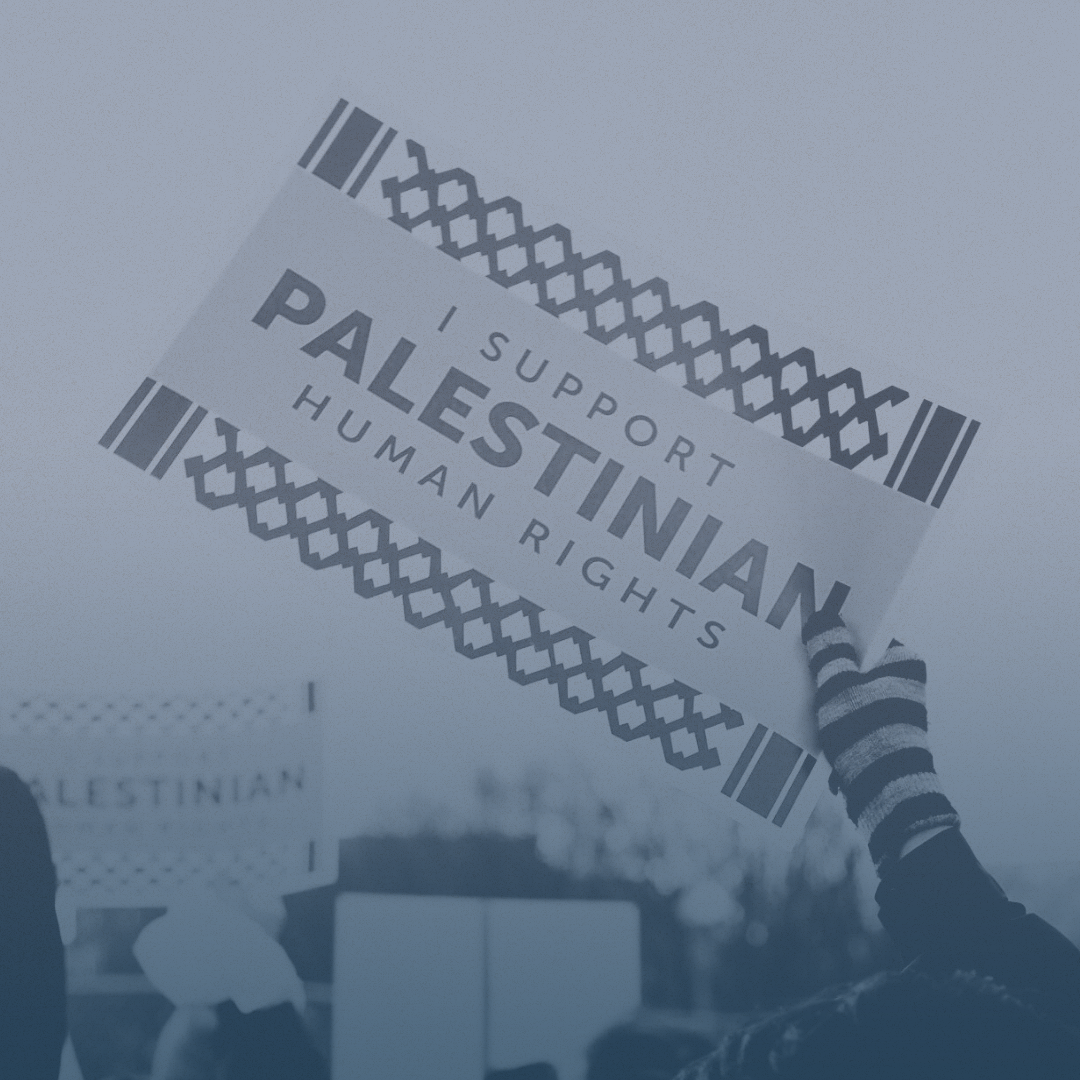 English content
English content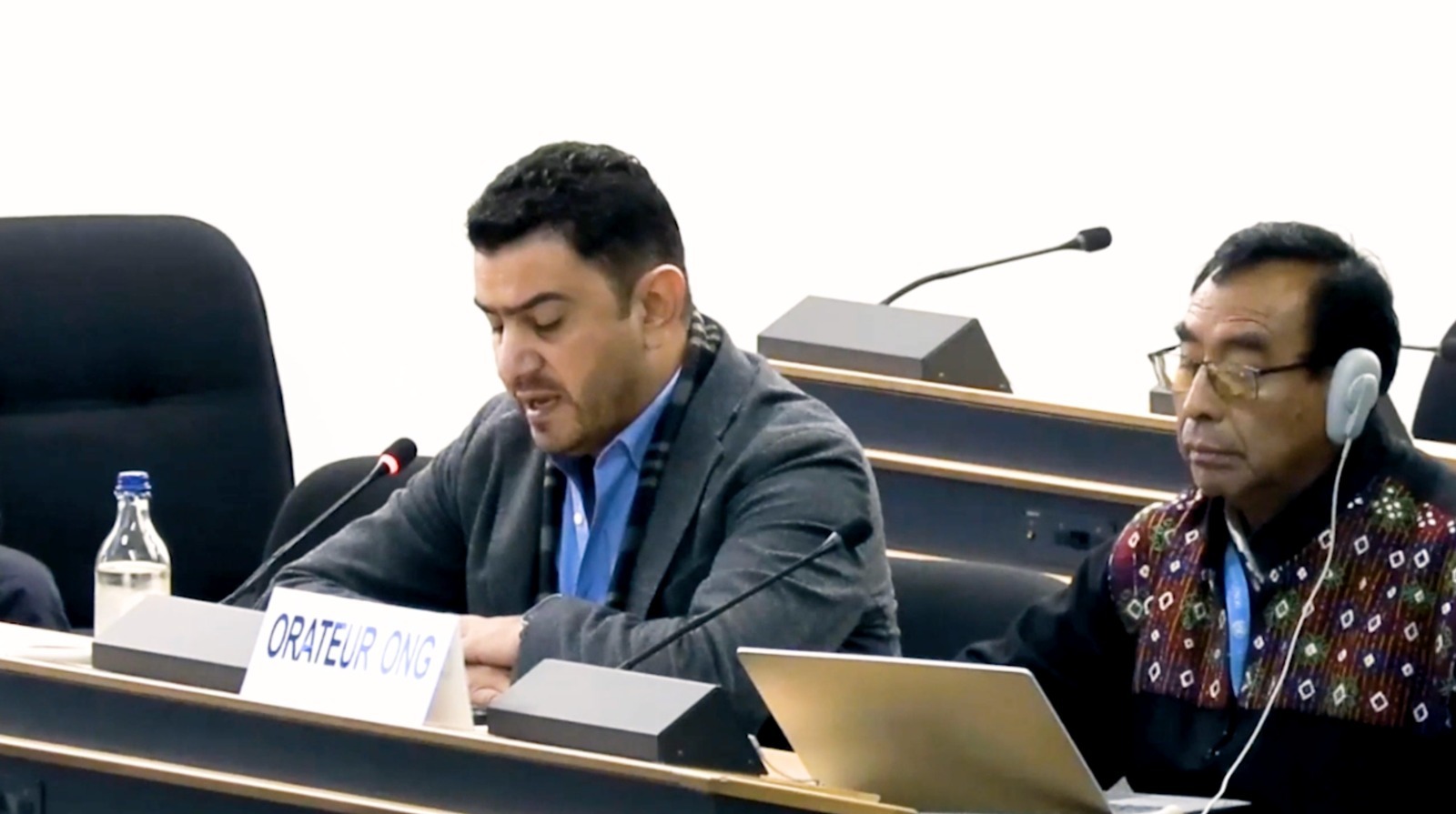 English content
English content

